by Alessandra Ressa
Have you ever tried radicchio rosso di Treviso? This unique winter delicacy, known as Treviso Chicory, is recognized and protected by the European Union with a PGI (Protected Geographical Indication) denomination. Bright red with a slightly bitter flavor, radicchio rosso di Treviso draws on natural spring water to bring out its particular color and taste. It is grown in a small area of Northeastern Italy, namely in a few municipalities around the cities of Treviso, Padua and Venice.
If you think that the price of this special radicchio at your greengrocer’s is a bit too high, think again. The process from the field to your table is so fascinating and complicated that you will be amazed it is cheaper than gold.
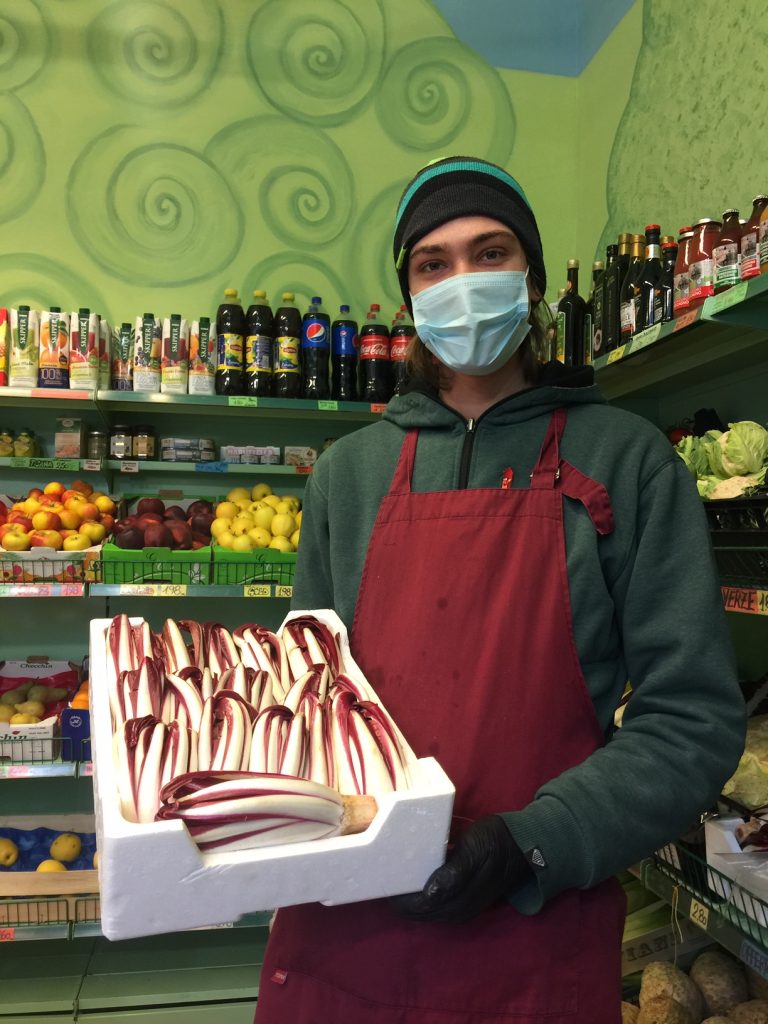
Wild chicory has been eaten in Italy for centuries, but its journey from humble roadside flower to radicchio rosso di Treviso PGI is one of careful selective breeding, an innovative production process, and considerable handicraft. The true origins of this plant are shrouded in myth but perhaps the most poetic story is that the first chicory seed was dropped by birds on the roof of a church, where it was carefully tended by monks from a local order.
The most common story however attributes its introduction to a Belgian horticulturalist, who applied the techniques of his home country to Italian chicory. Whatever the truth behind its origins, by 1900 radicchio rosso di Treviso had become enough of a specialty that exhibitions were being held to celebrate its qualities.
Planted before the end of July, radicchio rosso di Treviso PGI is left in the fields throughout autumn before being harvested. Whereas early-growing radicchio can be harvested at any point after September 1st, the late-growing variety cannot be brought in from the fields before the first frosts.
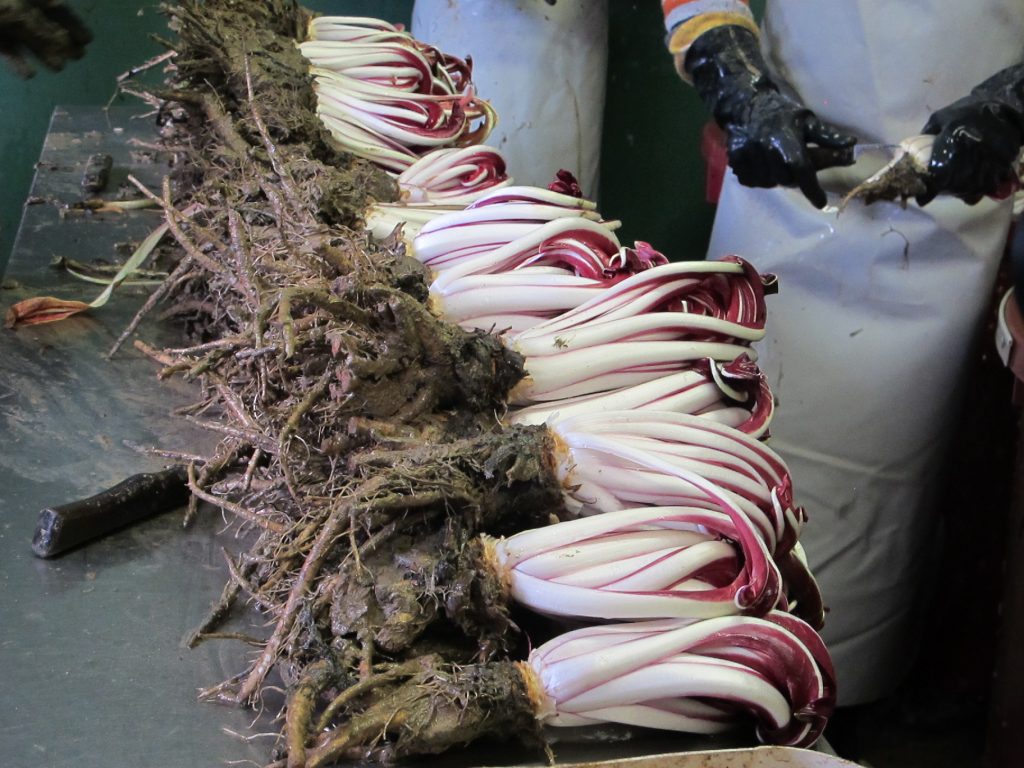
After harvesting, the radicchio is cleaned, and the outer leaves removed. The heads are gathered into bundles or placed in nets or crates, and carefully stored to prevent damage. The chicory is now ready to be bleached and forced – a process that gives the radicchio its distinctive coloring and crunch. Placed in dark tanks, its stems are soaked in local spring water, which is kept at a constant temperature. The leaves, however, must never touch the water. This tricks the plant out of its hibernation and encourages new growth. The darkness in the tank stops the radicchio from producing chlorophyll, blanching the stems.

Geographical delimitations to cultivation allow growers to benefit from the numerous springs found within the region. Grown in both early and late varieties, which have slightly different flavors and textures, both undergo a similar process to obtain the final product.
Radicchio rosso di Treviso PGI is prepared exclusively by hand by removing the outer leaves and carving the stem before it can be sold. This takes considerable finesse, as only through careful removal of the outer segments does the vegetable take on its characteristic appearance.
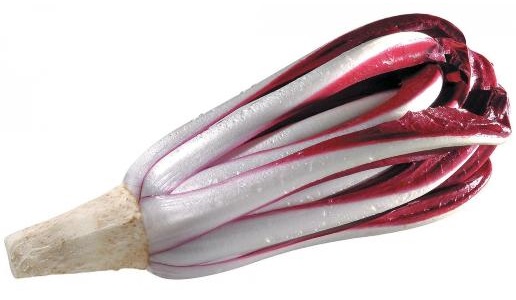
From eating it raw shredded in curly strings in salads to grilling it with olive oil, salt and pepper, radicchio di Treviso can be used in literally thousands of recipes. One of my own recipes, very popular with my kids and guests, is La Partigiana(The Partisan). It has the look of a parmigiana but the heart of a lasagna. Don’t you already love it? I named it La Partigiana because of its bright red color and a touch of former Yugoslavia…

Recipe for La Partigiana (feeds 4 to 6):
Ingredients: 700 grams radicchio rosso di Treviso PGI, 400 grams beef cevapcici (traditional ground meat sausages originally from former Yugoslavia, beef cevapcici are more delicate than pork and easy to find at butchers in Trieste), 1 liter milk, flour, salt, pepper, ground nutmeg, mozzarella or local Monrupino cheese for extra flavor, grated Parmesan cheese, beetroot cooking water for extra color, and a package of fresh lasagna sheets.
Chop radicchio and cevapcici and stir in a pan with abundant olive oil until perfectly cooked and dark. As cevapcici meat is usually already seasoned, you may not need to add salt at this stage. Pour in 2 cups of milk and 2 cups of beetroot cooking water. If you don’t have beetroot cooking water (why shouldn’t you?) just replace it with milk. Stir over a low fire and add salt, a pinch of grated nutmeg, pepper, and flour until thick and creamy.
Spread some of the red creamy mix on the bottom of a casserole then apply the first layer of lasagna sheet. Add thick slices of mozzarella or Monrupino cheese, abundant Radicchio Rosso mix, top with grated Parmesan and cover with lasagna sheets. Continue layering according to the capacity of your casserole, leaving at least 2 cm free between the lasagna top and your casserole edge, to avoid leaking while cooking.
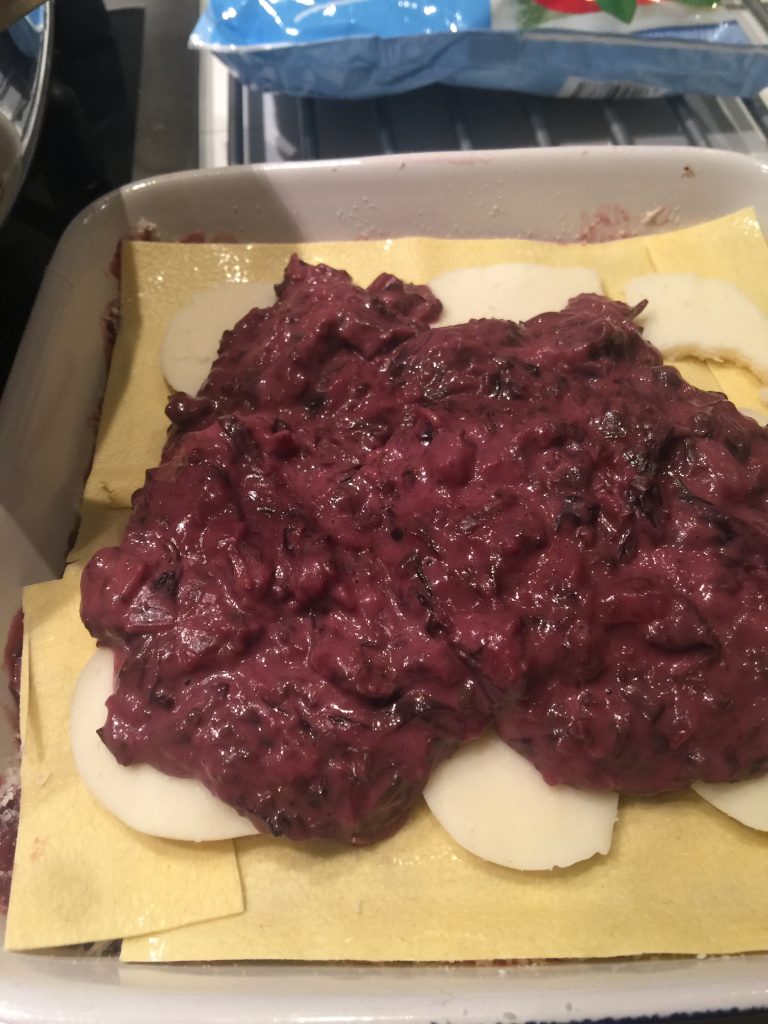
Cover the last layer with Radicchio mix, abundant grated Parmesan cheese and olive oil. Heat the oven at 200 °C and bake for about 30 minutes. You’ll know when it’s ready by looking at the top layer.
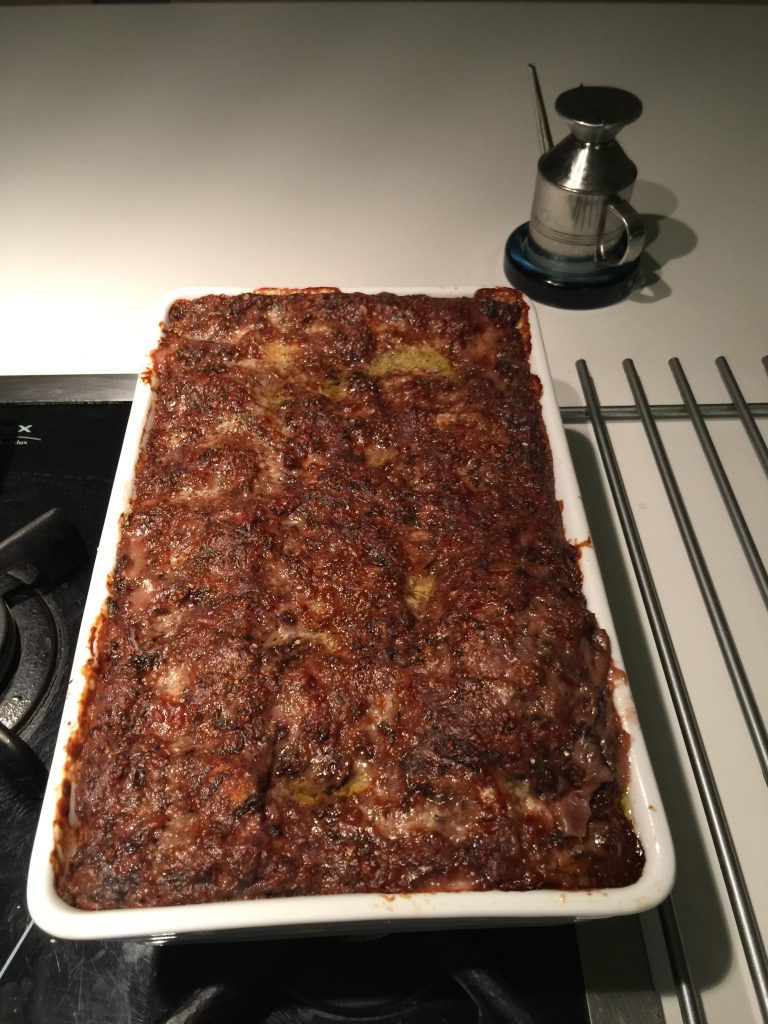
Of course my Partigiana recipe can also be vegetarian. It is just as delicious, but you will need extra salt and spices. And did I mention that this wonder vegetable is rich in vitamins and minerals? Remember though, radicchio rosso di Treviso and its varieties are only available between October and March.


























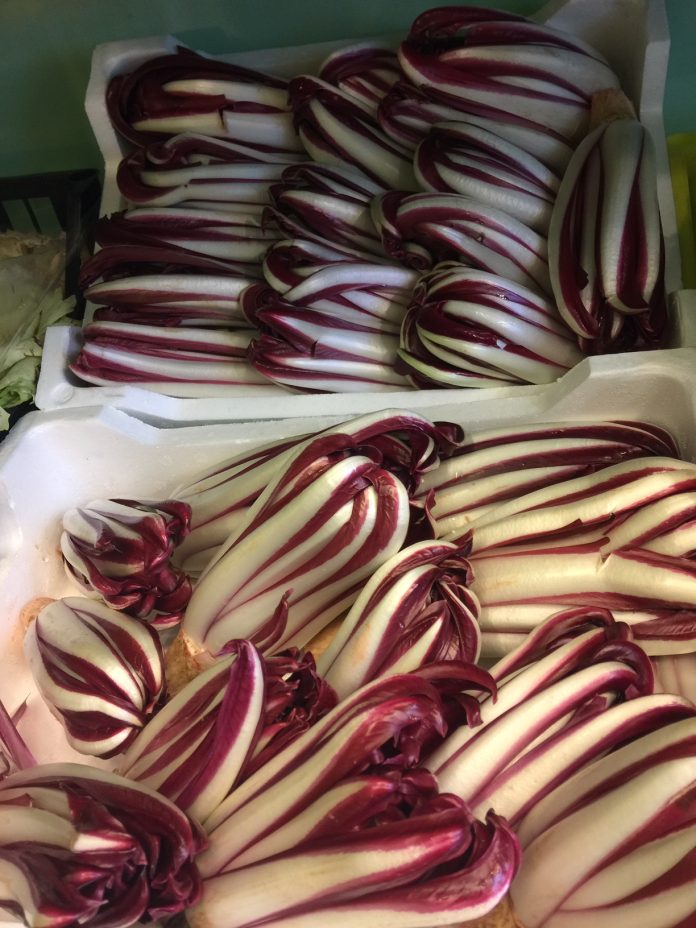




Thanks for the information and for the recipe which, no doubt, I will try out. However, my favorite recipe, so far, is the risotto with Radicchio Rosso di Treviso. If you’ve never tasted it, I think you should try it!